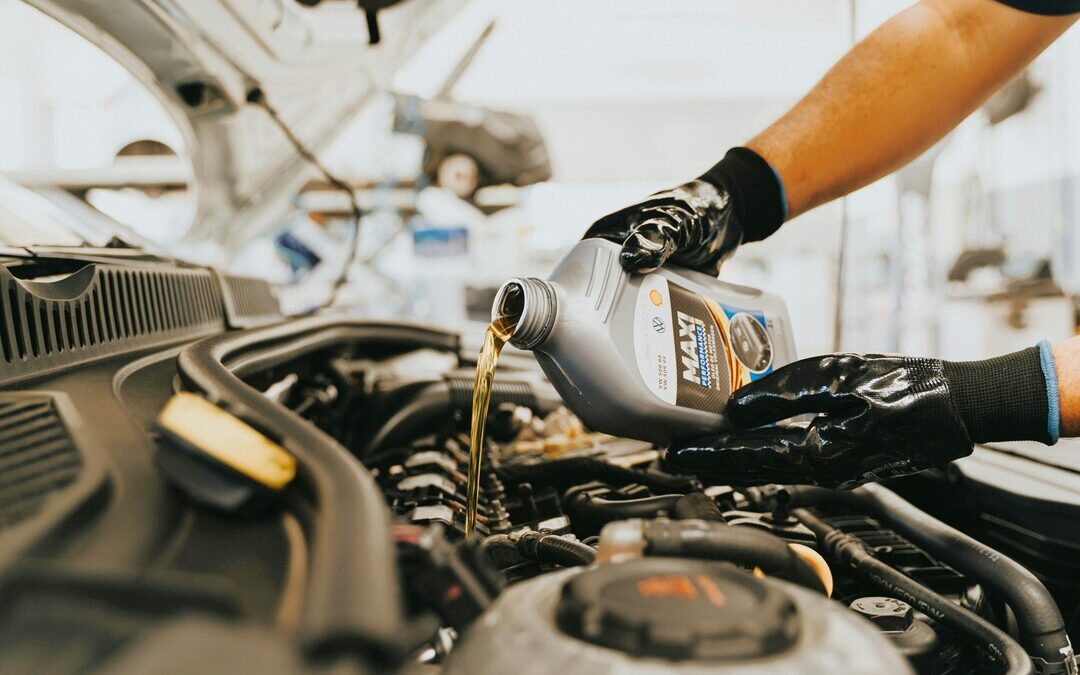Lube Oil Industry Targets 81% Emissions Cut Through Re-Refined Oils: KPMG
Lubricant industry turns to re-refined oils, bio-based feedstocks and sustainable packaging to cut emissions and boost efficiency.
The global lubricant oil industry could slash its greenhouse gas emissions by as much as 81 percent by scaling up re-refining of used oils and adopting low-carbon feedstocks, according to a new KPMG Middle East report on decarbonization.
A lifecycle assessment cited in the study found that re-refined base oils generate just 0.422 kilogram of carbon dioxide equivalent per kg, compared with about 1.85 kg for virgin base oils, emphasizing the climate benefits of circular approaches.
Used-oil re-refining is significantly more energy efficient and climate-friendly than crude processing or uncontrolled waste oil disposal.
The report, published in September, said the lubricant industry faces mounting pressure to curb emissions from production, packaging and end-of-life management to align with global net-zero targets.
From crude extraction to disposal, a single liter of lubricant can generate more than 3.5 kilograms of CO2 equivalent, it noted.
Innovation in Refining and Feedstocks
Technological advances are reshaping the lube oil value chain. Catalyst systems that combine nickel-molybdenum and platinum zeolites now enable higher yields of Group II and Group III base oils under milder refining conditions, reducing the energy footprint.
Producers are also blending biomass-derived feedstocks with conventional inputs to create lower-carbon base oils compatible with existing infrastructure.
In parallel, researchers are testing renewable base oils made from non-food biomass. One study cited in the report found that such oils could achieve yields of up to 90 percent, with strong performance and reduced reliance on chemical additives.
The International Energy Agency estimates oil and gas operations account for 5.1 gigatonnes of CO2 equivalent annually, or 15 percent of global energy sector emissions.
To stay on track for net-zero by 2050, those emissions must fall by more than 60 percent by 2030.
The electrification of refining processes, reducing methane leaks and deploying low-emission hydrogen were highlighted as key levers for lubricant producers.
Packaging and Use-Phase Improvements
Packaging innovation is emerging as another lever for reducing emissions. TotalEnergies has introduced lubricant bottles made from 50 percent post-consumer recycled plastic and lighter 20-liter cans, which are expected to save 280 tonnes of CO2 equivalent annually in France and Belgium.
Other companies are piloting cardboard-based containers that use up to 86 percent less plastic while improving logistics efficiency.
Lubricant use also offers decarbonization opportunities. Modern additives have extended oil change intervals from 5,000 kilometers in older vehicles to 30,000 km in newer models. Premium synthetic lubricants can stretch even further, cutting the frequency of production, transport, and disposal.
Digital monitoring tools are being used to reduce lubricant waste, with one Finnish company reporting a 13,400-liter reduction in oil use over four years, equivalent to a 10-tonne annual CO2 saving.
Toward a Circular Future
End-of-life management remains one of the most decisive factors for the sector’s climate impact. Re-refining of used oil offers lifecycle emissions reductions of up to 81 percent compared with virgin production.
A recent North American study cited by KPMG showed cradle-to-gate emissions of re-refined oil were 77 percent lower than for virgin oils.
KPMG said tackling emissions across Scopes 1, 2, and 3 will be critical for the industry to remain resilient and support global and regional net-zero goals, including those in the Middle East.
As neighboring economies pursue decarbonization, the consultancy argued that cross-border collaboration in innovation and policy will be key to transforming the lubricant landscape.
“Technological advancement and environmentally friendly formulations will create new growth avenues and set a new benchmark in the region’s industrial revolution,” the report said.
Nirmal Menon
Related posts

Subscribe
Error: Contact form not found.


